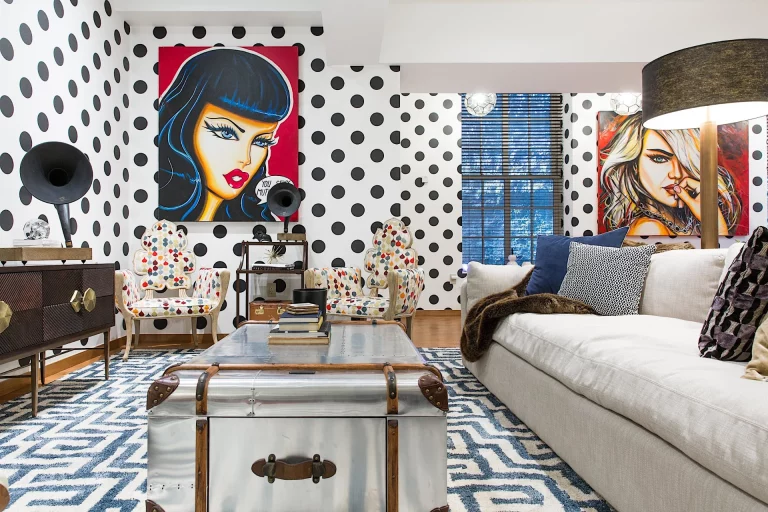Maximalist design is a bold and eclectic home decor trend that has become increasingly popular in recent years. It focuses on creating a unique look with busy patterns, vivid colors, ornate details, and an array of textures, materials, and finishes.
Rather than a minimalist approach that values clean lines and open space, the maximalist design embraces the idea of layering items to create a cozy yet visually striking interior. Not only can this approach bring personal expression into your home, but it can also help to create a cohesive look that ties everything together in a balanced way.
History of Maximalist Design
The concept of maximalist design has roots in the Baroque period of the 17th and 18th centuries, which was characterized by elaborate and ornate design elements such as gilded furniture and lavish materials.
The concept spread to the United States after World War II when homeowners wanted to celebrate newfound prosperity by displaying bright colors and eclectic decorations. Throughout history, maximalism has been used to reflect an individual’s wealth and social status—but today it’s become more accessible thanks to more affordable products like vintage furniture finds or decorative DIY projects.
In the 20th century, maximalist design saw a resurgence with the emergence of Art Deco, a style that featured bold geometric shapes and lavish materials such as marble and gold. More recently, maximalist design has gained popularity as a way to express personal style and create a unique and cohesive look in the home.
It has been embraced by designers and homeowners alike, with maximalist interiors appearing in magazines, websites like Spark & Chemistry, and on social media. While the minimalistic design is still popular, maximalist design has become a viable alternative for those looking to make a statement with their home decor.
Elements of Maximalist Design
At its core, maximalism is all about mixing patterns, textures, colors, and finishes to create an eye-catching look. Mixing patterns can be done with:
throw pillows of different shapes and sizes
- Textured rugs create depth
- Statement wallpaper adds rich color
- Mirrors bounce light around the room
- Lighting fixtures add another layer of texture
- Bold furniture pieces are essential for tying everything together
Remember, layering is key… it’s all about finding the right balance between boldness and subtlety so that nothing looks too cluttered or forced.
Some common elements of maximalism include:
- Painted walls with vivid hues such as emerald green or cobalt blue
- Intricate chandeliers
- Colorful textiles such as velvet upholstery or woven rugs
- Gold accents like lamps or frames
- Vintage treasures like artwork or antique knickknacks
- Sentimental items such as family photos or heirlooms
- Plants for added life
- Quirky items like neon signs or statement pieces add personality to your space
Incorporating Maximalist Design into Your Home
When it comes to incorporating maximalism into your home decor, there are many small-scale projects you can do yourself on a budget without any major renovations required—such as adding brightly colored accents like throws pillows or wall hangings—or larger-scale projects if you’re willing to invest more time and money into updating your space (e.g., reupholstering an armchair).
No matter what you choose to do, keep in mind that maximalism is all about expressing who you are through your decor choices: make sure every piece speaks to your personal style. Start small by adding one statement item at a time until you feel like you have achieved a balance between the colors, textures, materials, and furniture pieces—less is often more!
Additionally, pay attention to lighting: natural daylight lets colors shine bright whereas dark corners should be illuminated with artificial lighting sources for the contrast between dark hues and muted tones throughout the room.
Finally don’t forget those sentimental touches — adding family photographs or mementos brings warmth into any corner of your home.
When it comes to styling your home in this way it’s important to remember that less is not necessarily more—while it might seem overwhelming at first it takes practice in order to find the right balance between too much and just enough when incorporating these elements into any given space.
Maximalist design is all about finding ways to express yourself through ornate details while also creating cohesion between patterns, colors, and textures in order to bring character into each room of your home.
Taking advantage of seasonal sales or flea markets can be a great way to find unique pieces without breaking the bank while also getting creative by upcycling existing items for something entirely new!

